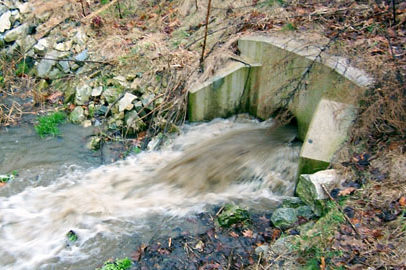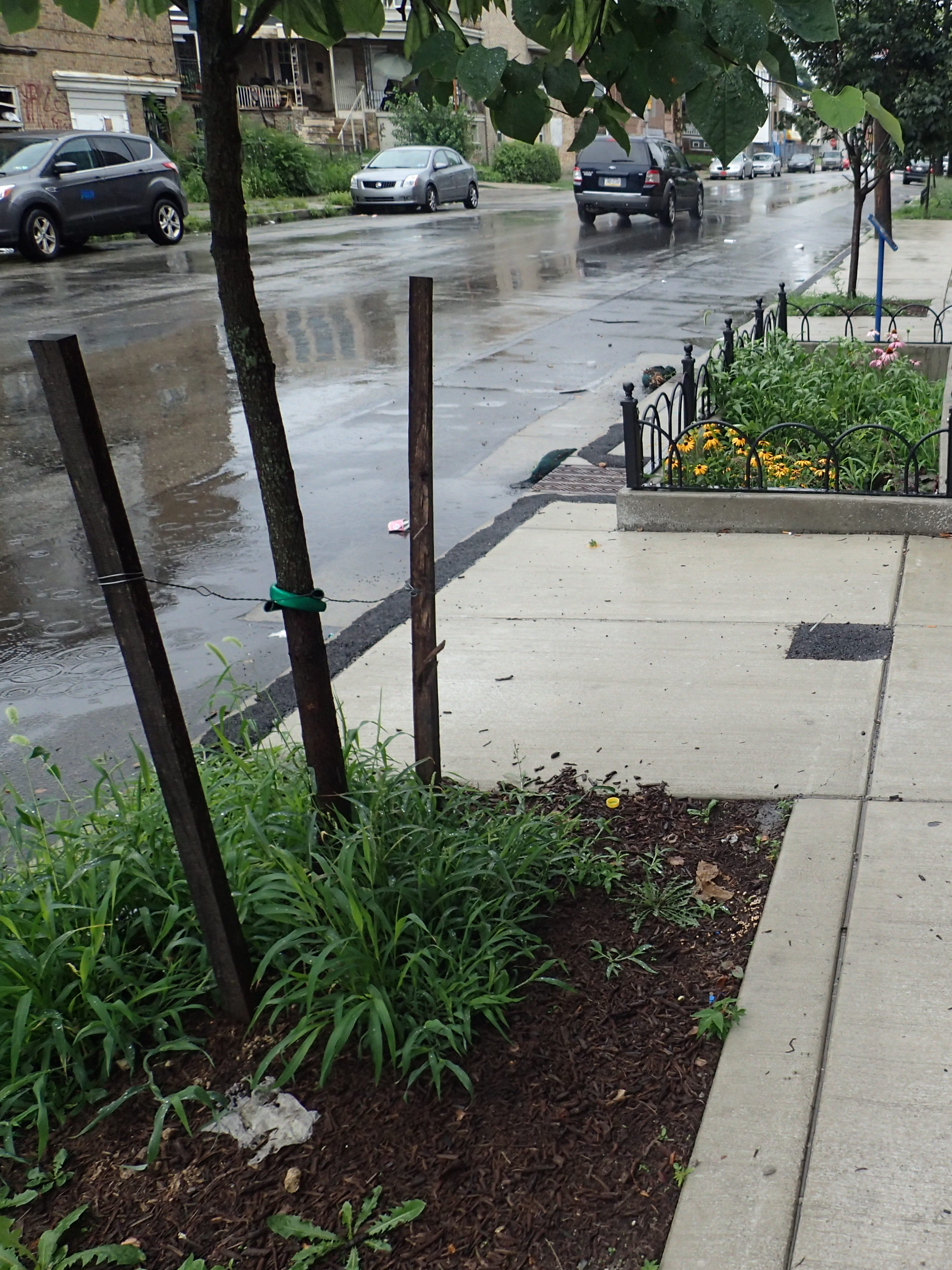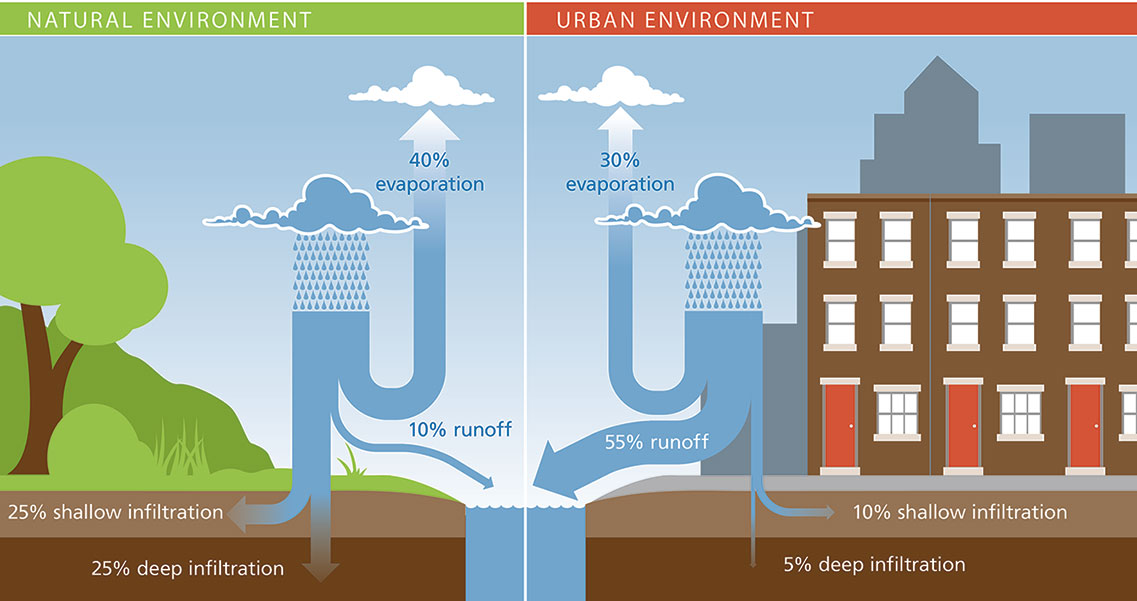Why do we need to manage stormwater?
Stormwater runoff has been identified as the number one cause of pollution to rivers and streams, the source of our drinking water.
When it rains or snows, stormwater runoff:
- contributes to combined sewer overflows
- pollutes our rivers with fertilizers, oil and sediment
- destroys valuable aquatic and riparian habitat
- floods homes and businesses

Combined Sewer System
In areas with combined sewers, a single pipe carries both stormwater from streets, houses, and businesses as well as waste water from houses and businesses to a water treatment plant.
During dry weather, the combined sewer system and wastewater treatment plants have the capacity to transport and treat all the wastewater entering the system, but when there is a lot of rain or snowmelt, the combined runoff and sewage may overwhelm the system, filling the pipes faster than our treatment plants can clean it, and overflowing into our rivers and streams.
Waterways where a combined sewer outfall is overflowing, or has overflowed in the last 24 hours, are unsafe for any type of recreation. Check CSOcast for information on recent combined sewer overflows.
Separate Sewer System
In areas with separate sewers, one pipe carries stormwater to the city’s streams while another carries wastewater to a water treatment plant.
This prevents waste from the sanitary sewers from mixing with stormwater, but means runoff is discharged directly into rivers and streams without being treated. Rainwater and melting snow and ice flowing over impervious surfaces like streets, sidewalks, and parking lots collects pollution along the way, mixing with motor oil, de-icing salt, and other chemicals, and carrying litter, animal waste, and debris into the storm drains and out into our waterways.
How does Philadelphia manage stormwater?
PWD manages stormwater by building and maintaining public stormwater infrastructure and by regulating development projects in the city. We use a combination of traditional “gray” infrastructure and green infrastructure projects to reduce flooding and minimize pollution entering our waterways.

Traditional or “gray” infrastructure stormwater management uses gutters, drains, and pipes to collect stormwater runoff and transport it to treatment plants or nearby bodies of water.
Green stormwater infrastructure or “GSI” uses soil, plants, and stone to capture and use stormwater where it falls, allowing it to be soaked up by plants or soil, evaporate into the air, or released more slowly into the traditional infrastructure system for treatment at a manageable rate. Learn more about GSI →
Green City, Clean Waters
While most traditional stormwater infrastructure is built and maintained by the city, green infrastructure is more decentralized, and so can – and must, in order to meet our goals, and state and federal regulations – be implemented in a variety of ways throughout the city, on public and private property.
Green City, Clean Waters is Philadelphia’s 25-year plan to reduce combined sewer overflows through treatment plant upgrades and the installation of green stormwater infrastructure in streets, parks, schools and other public spaces, as well as regulations and incentives encourage the private sector to use green stormwater infrastructure.
